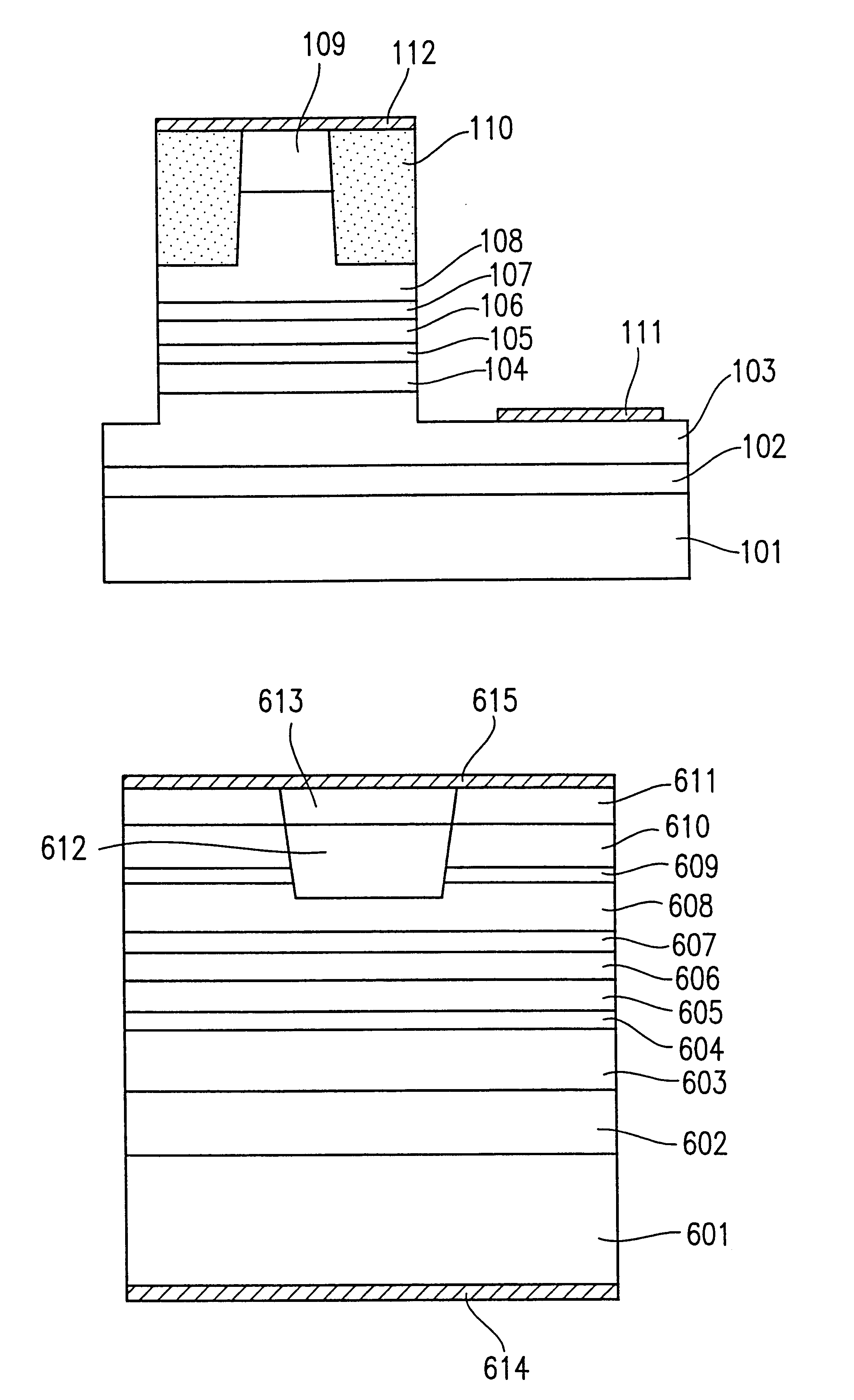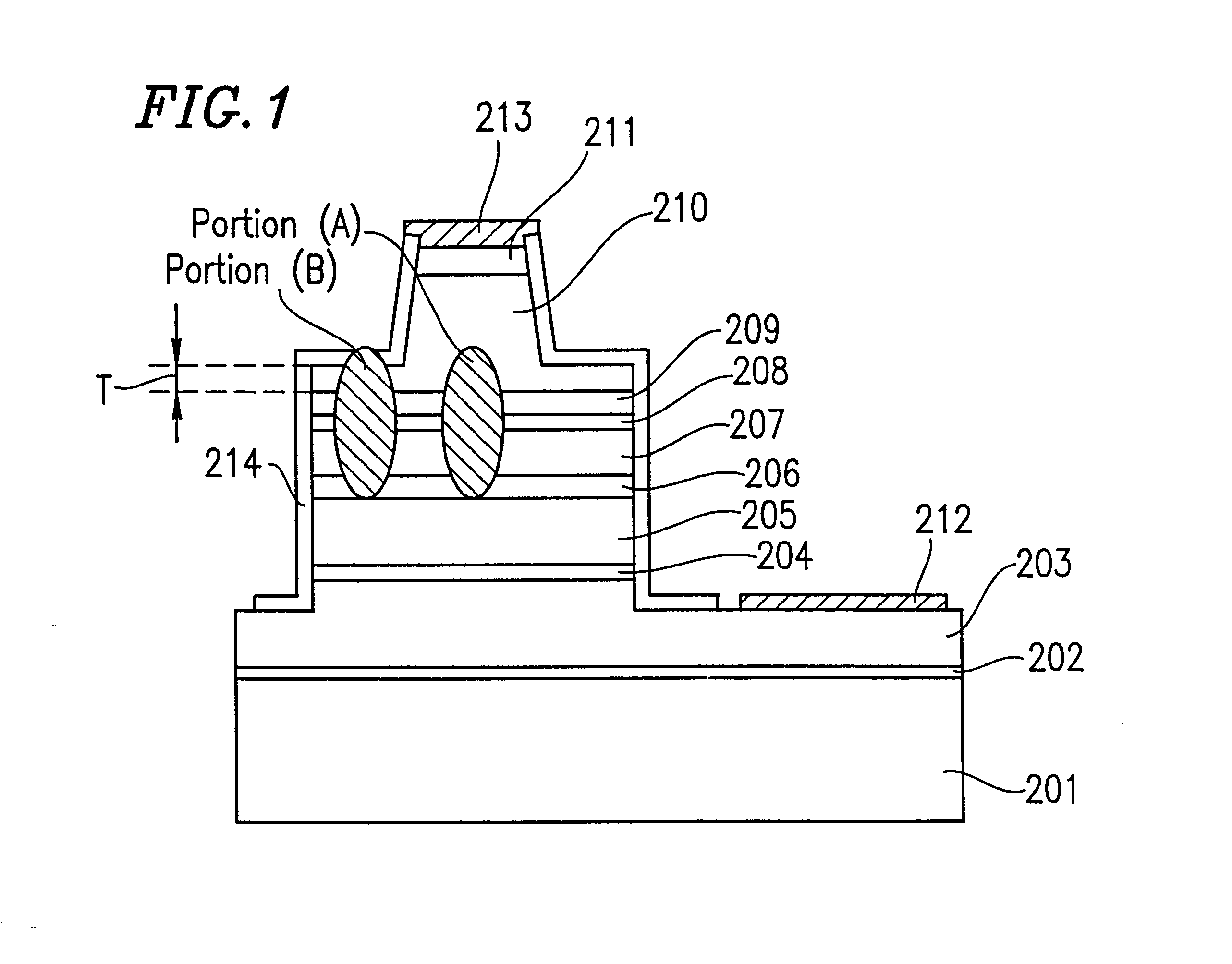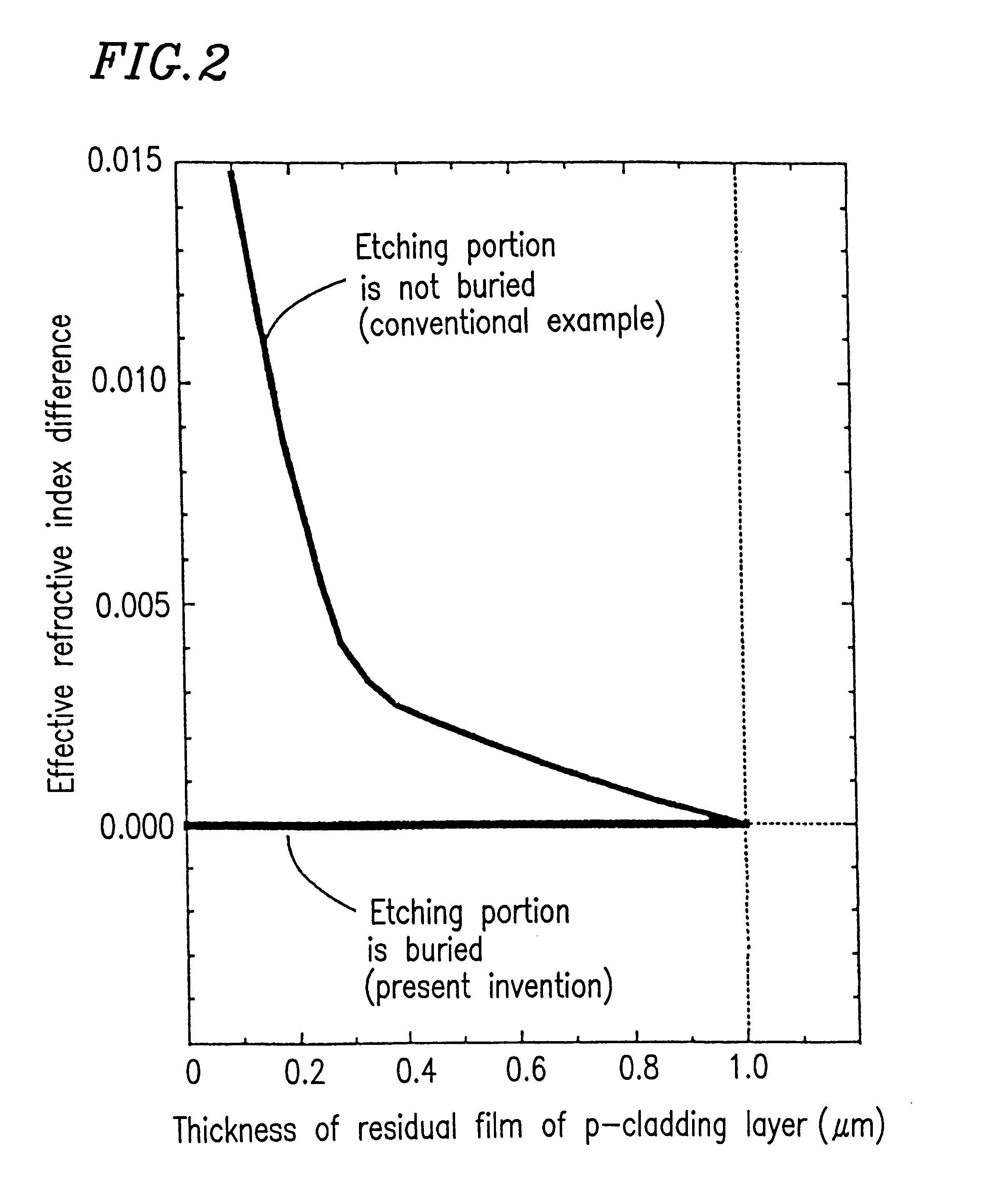Compound semiconductor laser
a semiconductor laser and compound technology, applied in semiconductor lasers, laser details, nanotechnology, etc., can solve the problems of less precise technique, large damage to the controllability of the transverse mode, and difficult to fabricate a semiconductor laser with a uniform transverse characteristic with a high yield, so as to improve the production yield of the laser, control the transverse mode stable, and the error tolerance range of etching large
- Summary
- Abstract
- Description
- Claims
- Application Information
AI Technical Summary
Benefits of technology
Problems solved by technology
Method used
Image
Examples
example 2
FIG. 8 is a schematic view showing a cross-sectional structure of a semiconductor laser according to Example 2 of the present invention. The laser diode of the present invention uses an insulating substrate. A fabrication process thereof has fabrication steps substantially identical with those of Example 1.
First, an undoped GaN buffer layer 402 of 20 nm, an n-GaN contact layer 403 of 5 .mu.m, an n-Al.sub.0.08 Ga.sub.0.92 N first cladding layer 404 of 1 .mu.m, an n-GaN light confining layer 405 of 0.1 .mu.m, an active layer 406 of InGaN-MQW structure, a p-Al.sub.0.2 Ga.sub.0.8 N evaporation preventing layer 407 of 0.05 .mu.m, a p-GaN light confining layer 408 of 0.1 .mu.m, a p-AlGaN second cladding layer 409 of 0.2 .mu.m, a p-GaN light guiding layer 410 of 0.05 .mu.m, a p-Al.sub.0.08 Ga.sub.0.92 N third cladding layer 411 of 0.8 .mu.m, and a p-GaN contact layer 412 of 0.5 .mu.m are epitaxially grown on a sapphire substrate 401 having a (0001) plane orientation (plane C) in a sequenti...
example 3
FIG. 9 is a schematic view showing a cross-sectional structure of a semiconductor laser according to Example 3 of the present invention. A laser diode of the present example is fabricated according to a process as follows.
First, an undoped GaN buffer layer 502 of 20 nm, an n-Al.sub.0.08 Ga.sub.0.92 N first cladding layer 503 of 1 .mu.m, an n-GaN light confining layer 504 of 0.1 .mu.m, an active layer 505 having an InGaN-MQW structure, a p-Al.sub.0.2 Ga.sub.0.8 N evaporation preventing layer 506 of 0.05 .mu.m, a p-GaN light confining layer 507 of 0.1 .mu.m, and a p-Al.sub.0.08 Ga.sub.0.92 N second cladding layer 508 of 0.2 .mu.m, a p-Al.sub.0.02 Ga.sub.0.98 N light guiding layer 509 of 0.05 .mu.m, a p-Al.sub.0.08 Ga.sub.0.92 N third cladding layer 510 of 0.8 .mu.m, and a p-GaN contact layer 511 of 0.5 .mu.m are epitaxially grown on an n-SiC substrate 501 in a sequential manner by the MOCVD method.
Next, a mask is applied to a portion of the p-contact layer 511, and an unmasked portion...
example 4
FIG. 10 is a schematic view showing a cross-sectional structure of a semiconductor laser according to Example 4 of the present invention, and FIG. 11 is a schematic view showing fabrication steps of the laser. A laser diode of the present example is fabricated according to a process as follows.
First, an undoped GaN buffer layer 602 of 20 nm, an n-Al.sub.0.08 Ga.sub.0.92 N first cladding layer 603 of 1 .mu.m, an n-GaN light confining layer 604 of 0.1 .mu.m, an active layer 605 of InGaN-MQW structure, a p-Al.sub.0.2 Ga.sub.0.8 N evaporation preventing layer 606 of 0.05 .mu.m, a p-GaN light confining layer 607 of 0.1 .mu.m, and p-Al.sub.0.08 Ga.sub.0.92 N second cladding layer 608 of 0.2 .mu.m, an n-Al.sub.0.3 Ga.sub.0.7 N light reflecting layer 609 of 0.1 .mu.m, a p-Al.sub.0.08 Ga.sub.0.92 N third cladding layer 610 of 0.7 .mu.m, and a p-GaN contact layer 611 of 0.5 .mu.m are epitaxially grown on an n-GaN substrate 601 in a sequential manner by the MOCVD method (FIG. 11(a)).
Next, a ma...
PUM
 Login to View More
Login to View More Abstract
Description
Claims
Application Information
 Login to View More
Login to View More - R&D
- Intellectual Property
- Life Sciences
- Materials
- Tech Scout
- Unparalleled Data Quality
- Higher Quality Content
- 60% Fewer Hallucinations
Browse by: Latest US Patents, China's latest patents, Technical Efficacy Thesaurus, Application Domain, Technology Topic, Popular Technical Reports.
© 2025 PatSnap. All rights reserved.Legal|Privacy policy|Modern Slavery Act Transparency Statement|Sitemap|About US| Contact US: help@patsnap.com



